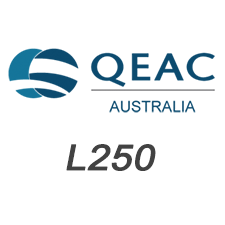Community Services Vs Social Work – Which course should I study?
Comparing Bachelor of Community Services and Bachelor of Social Work: Career Outcomes, Pay, and Migration Opportunities in Australia
In Australia, higher education in social welfare and community support often leads to two distinct pathways: the Bachelor of Community Services and the Bachelor of Social Work. While both qualifications aim to equip students with skills to support and advocate for individuals and communities, they differ in career outcomes, pay prospects, and migration opportunities. Understanding these differences can help prospective students make informed decisions about their education and future careers.
*Career Outcomes*
The Bachelor of Community Services primarily prepares students for roles focused on direct support and advocacy within community settings. Graduates often find positions in areas such as community development, case management, and program coordination. Typical job titles include Community Support Worker, Case Manager, and Program Coordinator. The scope of these roles often involves working with individuals and groups to improve their well-being and access to services, but it may not involve the more intensive clinical work associated with social work.
In contrast, a Bachelor of Social Work is more comprehensive in its approach, combining both practical skills and theoretical knowledge. Social work graduates are trained to handle a wide range of issues, including mental health, child protection, and family dynamics. They are prepared for roles that require a deep understanding of psychological and social issues, such as Clinical Social Worker, Child Protection Officer, or School Social Worker. The role often involves more direct intervention and therapy, and may require engagement with legal and policy frameworks.
*Pay Prospects*
The salary expectations for graduates from these two programs can differ significantly due to the nature of their respective roles. Generally, social workers can expect higher salaries compared to community services professionals. According to recent data, social workers in Australia earn an average annual salary ranging from AUD 65,000 to AUD 85,000, depending on experience and specialization. Those in senior or specialized roles may earn more.
On the other hand, community services professionals typically earn between AUD 55,000 and AUD 70,000 annually. The variation in salaries reflects the additional training and specialization required for social work roles, which often involve more complex and demanding responsibilities.
*Migration Opportunities*
For international students and professionals seeking migration opportunities in Australia, the choice between these degrees can influence their visa options. The Bachelor of Social Work is often viewed more favorably in the context of skilled migration. Social work is listed on Australia’s Skilled Occupation List, which means that social workers may have better prospects for obtaining a skilled migration visa. This is due to the high demand for social workers across various sectors, including health, education, and community services.
In contrast, the Bachelor of Community Services does not always align as directly with migration pathways. While there are opportunities within the community services sector, the occupation may not be listed as prominently on the Skilled Occupation List. Consequently, graduates with this degree might face more challenges in securing skilled migration visas compared to their social work counterparts.
*Conclusion*
In summary, while both the Bachelor of Community Services and the Bachelor of Social Work prepare students for fulfilling careers in supporting individuals and communities, they diverge in career outcomes, pay prospects, and migration opportunities. The Bachelor of Social Work generally leads to higher-paying roles with more extensive responsibilities and better migration prospects. Conversely, the Bachelor of Community Services typically aligns with roles focused on direct support and advocacy, often with lower salary expectations and fewer migration benefits. Prospective students should consider these factors carefully when choosing between the two paths, taking into account their career aspirations and long-term goals in Australia.
Disclaimer: The document is provided for general information purposes only. Your use of any of this information is at your own risk, and you should not use any of this information without first seeking legal and other professional advice. The provision of this document (and the documents themselves) do not constitute legal advice or opinions of any kind, or any advertising or solicitation. No lawyer-client, advisory, fiduciary or other relationship is created between VIVID EDUCATION and any person accessing or otherwise using any of the information. Vivid Education and its affiliates (and any of their respective directors, officers, agents, contractors, interns, suppliers, and employees) will not be liable for any damages, losses, or causes of action of any nature arising from any use of any of this information.

















